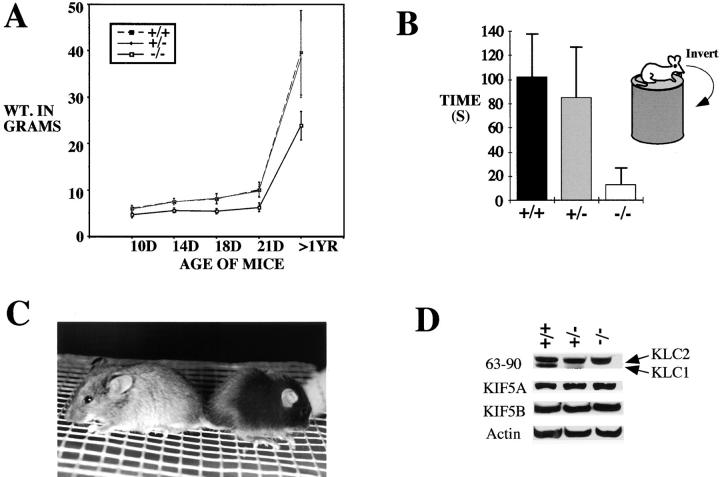Figure 2.
Analysis of basic phenotypes of KLC1 mutant mice. A, All 98 offspring from the first 12 litters of F1 heterozygous × F1 heterozygous matings were weighed at days 10, 14, 18, and 21 after birth. 25 adult mice of each genotype (caged together) were also weighed at ∼1 year of age as a final data point. The average weights in each category are represented in this graph. Homozygous mice were consistently smaller than their heterozygous or wild-type littermates. B, 15 wild-type, heterozygous, and homozygous mice were tested for sensorimotor defects. Mice were allowed to hang upside down from chicken wire (1-cm gauge) attached to a bell jar ∼1.5–2 ft above a surface. They were subsequently timed until they could no longer maintain grip and fell. Timing was cut off at 2 min for wild-type and mutant heterozygotes. C, Picture of wild-type and homozygous mice from the same litter at ∼3-wk old. The wild-type mouse (agouti coat color) is noticeably larger than the KLC1 homozygous mouse (black coat color). D, Equal amounts of total protein (40 μg) from brain extracts were loaded for Western analysis. KIF5A and KIF5B antibodies were used to detect the two KHC components, and 63-90 was used to detect both KLC2 (upper band) and KLC1 (lower band). Actin was used as an internal loading control for the blots. The intensity of the bands was quantitated using NIH Image and the ratios calculated as shown in Table .

